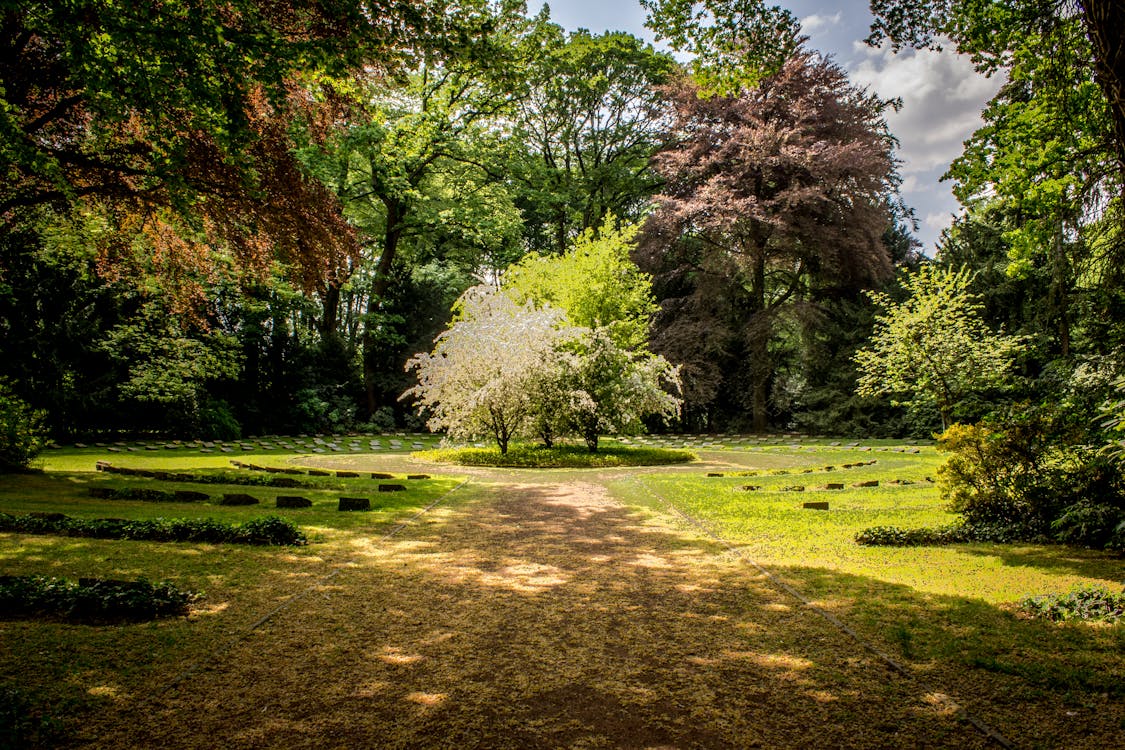When people think of outdoor areas with live, horticultural components, they usually picture gardens, parks, and the like. This type of setting is called a soft landscape. Soft landscaping emphasises the organic and natural features of outdoor design, in contrast to “hard” landscaping which makes use of inanimate objects such as stones, bricks, and buildings.

Plants, trees, bushes, and flowers are all part of soft landscaping, which we’ll explore in detail in this article. Careful placement of these components creates outdoor areas that are both beautiful and practical. In addition to improving an area’s aesthetic value, soft landscaping helps maintain ecological harmony by creating homes for animals and increasing biodiversity.
We will delve into the concepts and methods of soft landscaping, taking into account things like soil quality, weather patterns, and upkeep procedures. To create sustainable soft landscapes that meet the needs of both aesthetics and ecology, the essay will also stress the significance of careful planning.
Whether you’re a professional landscape designer, a passionate gardener, or just someone who wants to make their outside area more attractive, it’s crucial to know the concepts of soft landscaping.
What Is A Soft Landscape?
The term “soft landscape” describes an outdoor area that is mostly composed of organic things, such as plants, trees, shrubs, flowers, and the like.
Soft landscaping, in contrast to “hard” landscaping, which makes use of inanimate objects like stones, paths, and buildings, emphasizes the verdant and growing features that enhance both the visual appeal and practicality of an area.
An important part of outdoor design, soft landscaping helps to create spaces that are aesthetically pleasing, long-lasting, and environmentally balanced. Plant choice, placement, soil quality, and care procedures are common considerations for gardeners, landscapers, and city planners when trying to improve the aesthetics and practicality of a given area.
Here are more examples of soft landscaping elements, click for More hints:
- Flower Beds: Designing and planting flower beds with a variety of flowering plants adds colour and vibrancy to outdoor spaces.
- Lawns: Well-maintained grassy areas contribute to the softness of a landscape, providing a comfortable and inviting surface.
- Hedges: Planting hedges for boundary definition or as decorative features adds a sense of structure and greenery.
- Ground Covers: Using low-growing plants as ground covers not only adds visual interest but also helps control soil erosion.
- Perennials: These plants come back year after year, offering a consistent and enduring presence in the landscape.
- Climbing Plants: Vines and climbing plants can be used to soften vertical structures like walls or pergolas.
- Ornamental Trees: Planting trees for their aesthetic appeal, such as flowering or colourful foliage varieties, adds height and character to the landscape.
- Water Features with Aquatic Plants: Incorporating ponds or water features with aquatic plants contributes to a tranquil atmosphere and supports biodiversity.
- Wildflower Meadows: Allowing areas to grow naturally with native wildflowers promotes biodiversity and adds a more naturalistic feel.
- Foliage Diversity: Incorporating a mix of plant textures, shapes, and sizes creates visual interest and a dynamic landscape.
- Shade Gardens: Planting shade-loving plants under trees or in areas with limited sunlight creates lush, green retreats.
- Herb Gardens: Growing herbs not only provides a practical culinary resource but also introduces fragrant and visually appealing elements to the landscape.
These examples highlight the various ways in which soft landscaping features can be used to improve the aesthetics, practicality, and environmental friendliness of outdoor areas.
Benefits Of Soft Landscaping
There are several advantages to soft landscaping, which improves the practicality and visual attractiveness of outdoor areas. Some important benefits are as follows:
- Visual Appeal: Soft landscaping adds colour, texture, and variety to outdoor environments, creating visually pleasing and inviting spaces. Well-designed gardens and greenery enhance the overall aesthetics of a property.
- Environmental Impact: The use of plants in soft landscaping contributes to environmental sustainability. Plants absorb carbon dioxide, release oxygen, and play a role in mitigating climate change. They also support biodiversity by providing habitats for various species.
- Improved Air Quality: Plants can filter and purify the air by removing pollutants and releasing oxygen through photosynthesis. Incorporating green elements into a landscape can contribute to better air quality.
- Reduced Urban Heat Island Effect: Soft landscaping, especially trees and large plants, can provide shade, reducing the heat island effect in urban areas. This helps lower temperatures and create more comfortable outdoor spaces.
- Noise Reduction: Plants, especially dense foliage and trees, can act as natural sound barriers, helping to absorb and reduce noise levels from nearby roads or other sources.
- Enhanced Well-Being: Access to green spaces has been linked to improved mental health and well-being. Soft landscaping provides opportunities for relaxation, stress reduction, and physical activity in natural surroundings.
- Wildlife Habitat: Soft landscaping elements, such as shrubs, trees, and wildflower meadows, create habitats for birds, insects, and other wildlife. This supports local biodiversity and contributes to ecological balance.
- Soil Health: Plants contribute to soil stability and health. Their root systems help prevent soil erosion, improve soil structure, and enhance water retention, especially in areas with well-designed planting schemes.
- Energy Efficiency: The strategic placement of trees and vegetation around buildings can provide natural shade in the summer, reducing the need for artificial cooling. In the winter, deciduous trees allow sunlight to reach buildings, contributing to passive heating.
- Increased Property Value: A well-designed soft landscape can enhance the curb appeal of a property, increasing its overall value. Green spaces are often considered desirable features for residential and commercial properties alike.
- Community Interaction: Public green spaces encourage social interaction and community engagement. Parks, gardens, and landscaped areas provide gathering spaces for events, recreation, and leisure activities.
- Seasonal Interest: Soft landscaping can be designed to provide interest and beauty throughout the seasons. Consideration of plant types that bloom or change colour at different times ensures year-round visual appeal.
Besides improving the visual appeal of a space, soft landscaping can have positive effects on society, the environment, and the bottom line. Individuals and communities benefit from an improved quality of life when outdoor areas are thoughtfully designed to incorporate live components.
Conclusion
When it comes to making outdoor areas more lively, eco-friendly, and visually beautiful, soft landscaping is crucial. Soft landscaping provides numerous advantages, including aesthetics, sustainability, and health, by utilising the power of living things like flowers, trees, and plants.
Gardens, flower beds, and other forms of landscape design can transform any space into a peaceful haven just by looking at them. In addition to its visual value, soft landscaping helps maintain a healthy ecosystem by increasing plant and animal life, purifying the air we breathe, and stabilising soil.
The development of parks and other green areas improves people’s health by facilitating their access to places to rest, play, and connect with nature.
In addition to making cities more resilient and sustainable, soft landscaping has ecological benefits including reducing the urban heat island effect and providing habitats for wildlife. In addition to improving the aesthetics and practicality of outdoor areas, plants also serve as natural sound barriers and reduce energy use.
Carefully incorporating soft landscaping components into any landscape—be it a public park, a private garden, or a business property—not only boosts property value but also creates a feeling of belonging and harmony with nature.
The significance of soft landscaping in fostering a balanced relationship between man-made and natural elements is growing as the value of green areas is acknowledged in our fast-urbanising society.
Choosing and investing in soft landscaping goes beyond a simple design decision; it’s a promise to build places that are healthier, more sustainable, and more pleasurable for people of all ages.
